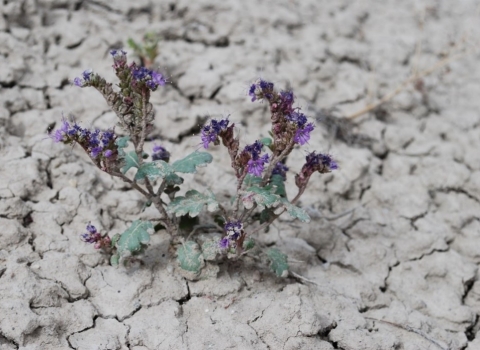WASHINGTON D.C. , March 22, 2024 (press release) –
This sixth edition of the national “Wetlands Status and Trends” report to Congress measured wetland change from 2009 to 2019 and builds on data from a series of reports spanning 70 years, highlighting the importance of wetlands.
“The reasons for these losses are multiple, but the results are clear – wetland loss leads to the reduced health, safety and prosperity of all Americans,” said Martha Williams, Director of the U.S. Fish and Wildlife Service. “This report serves as a call to action to stop and reverse wetland loss and ensure we continue to provide future generations with clean water, protection against natural disasters, and resilience to climate change climate change
Climate change includes both global warming driven by human-induced emissions of greenhouse gases and the resulting large-scale shifts in weather patterns. Though there have been previous periods of climatic change, since the mid-20th century humans have had an unprecedented impact on Earth's climate system and caused change on a global scale.
Learn more about climate change and sea level rise, as well as habitat for many plants and animals.”
The report shows wetland loss has disproportionately impacted vegetated wetlands like marshes and swamps. The rapid disappearance of vegetated wetlands between 2009 and 2019 has resulted in a loss of 670,000 acres, an area approximately equal to the land area of Rhode Island. Declines in vegetated wetlands primarily occurred in the Southeast, Great Lakes, and Prairie Pothole regions. Decreases were particularly prevalent in the coastal watersheds of the Carolinas, the Delmarva Peninsula, Florida, Louisiana and Texas, as well as near the Mississippi and Mobile rivers.
The main drivers of wetland loss have shifted over time. In the mid-1900s, loss was primarily caused by drainage and fill associated with agriculture. During the 2009 through 2019 study period, loss was associated with development, upland planted forest, and agriculture. However, other drivers also likely contributed to the loss, including climate change and sea level rise, especially along the coasts.
To achieve no net loss of all wetlands, including vegetated wetlands, the report concludes that a strategic update is needed to America’s approach to wetland conservation. Conserving and restoring vegetated wetlands will be critical to addressing climate change and threats to biodiversity.
Wetlands are one of the most productive and biodiverse habitats, with 40 percent of all plant and animal species living or breeding in wetlands. Threatened and endangered species are no exception, with approximately half of all Endangered Species Act species in the United States being wetland dependent. Wetlands provide stopover and wintering habitats for more than 4 billion birds from Canada as well as breeding habitats for nearly five billion migratory birds en route to the tropics. Wetlands also provide shelter and vital nursery habitat for many species of fish and are an important source of cultural resources for communities and many Native American Tribes.
Positioned at the transition between dry land and deepwater systems, wetlands are characterized by unique biological, chemical and hydrological conditions. Wetlands provide a multitude of ecological, economic and social benefits, as well as habitat for fish, wildlife and a variety of plants. Wetlands hold and slowly release flood water and snow melt, buffer against coastal storms, recharge groundwater, act as filters to cleanse water of impurities, recycle nutrients and provide recreational opportunities for millions of people. Wetlands are also nurseries for many salt and freshwater fishes and shellfish of commercial and recreational importance.
The Service uses funding sources like the Bipartisan Infrastructure Law Bipartisan Infrastructure Law
The Bipartisan Infrastructure Law (BIL) is a once-in-a-generation investment in the nation’s infrastructure and economic competitiveness. We were directly appropriated $455 million over five years in BIL funds for programs related to the President’s America the Beautiful initiative.
Learn more about Bipartisan Infrastructure Law to invest in conservation efforts to combat climate change and restore ecosystems that will provide long-lasting benefits to the American people. Within the Service and many other federal agencies, the Wetlands Status and Trends reports guide the funding, planning and implementation of wetland protection, restoration and enhancement, habitat assessments, strategic habitat conservation, and ecosystem management activities. To read the report, visit https://www.fws.gov/project/2019-wetlands-status-and-trends-report For related images, visit https://www.flickr.com/photos/usfwshq/albums/72177720314317155
-FWS-
The U.S. Fish and Wildlife Service works with others to conserve, protect and enhance fish, wildlife, plants and their habitats for the continuing benefit of the American people. For more information, visit www.fws.gov and connect with us on social media: Facebook, Instagram, X (formerly known as Twitter), LinkedIn, Flickr and YouTube.
* All content is copyrighted by Industry Intelligence, or the original respective author or source. You may not recirculate, redistrubte or publish the analysis and presentation included in the service without Industry Intelligence's prior written consent. Please review our terms of use.

